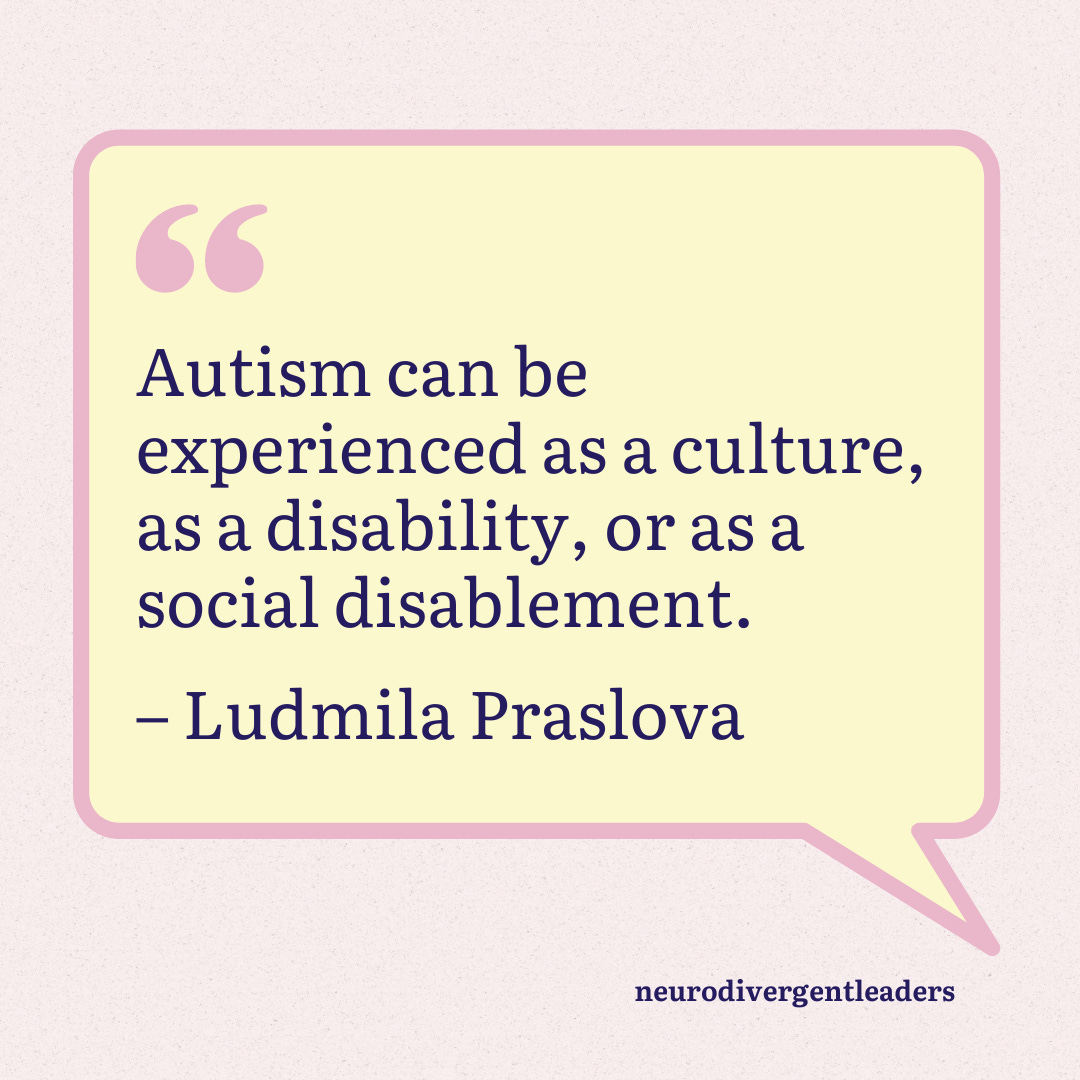Ways of talking about neurodiversity
Suggestions for neurodivergent people, their managers and co-workers.
The gist of this article is:
The language we use to describe neurodiversity is evolving. Just as there’s no one right way for brains to function, there’s no one right way to describe neurodiversity.
Having said that, it’s worth being aware of the differences between:
medical ways of describing neurodiversity which are based on deficits and disorders
neurodiversity-affirming language which focusses on differences and support needs.
Neurodivergent folks might find it helpful to experiment with different ways of describing their strengths, challenges and support needs, and their co-workers and managers can ask them about their preferred language.
I wanted to write about this topic to help neurodivergent folks, and those who are supporting them at work, navigate the language of neurodiversity.
From disorders to identities
One thing that is really noticeable when reading about neurodiversity is the range of vocabulary used to describe it. Depending on the author and the time they were writing, you might see neurodiversity referred to using one of the terms below, or others.
challenges
conditions
cultures
deficits
disabilities
disorders
identities
neurominorities
neurotypes
superpowers.
With all these terms in the mix, it’s no surprise that we may encounter different ways of thinking and describing neurodiversity at work.
Historically, clinicians described neurodiversity in terms of deficits. In contrast, the language of the neurodiversity movement describes a natural range in how our brains work, in terms of differences rather than disorders or abnormalities. This is because there isn’t a single “right way” for brains to function. And often, the way that society is set up contributes to the level of disorder, disablement, or difficulty that a neurodivergent person experiences.
This is not to minimalise or gloss over the very real challenges faced by neurodivergent people - which is why overly positive terms like “superpowers” can be polarising.
Here, we can take guidance from Te Reo Hāpai, a project based in Aotearoa New Zealand that is reframing how we talk about mental health, addiction, and disability.
Te Reo Hāpai – The Language of Enrichment
‘Te Reo Hāpai – The Language of Enrichment’ is a Māori language lexicon for use in the mental health, addiction and disability sectors. Founded by Keri Opai, it combines lived experience with clinician and practitioner input. The terms, as a result, are more descriptive and empowering, such as:
Autism - takiwātanga - in his/her/my own time and space
ADHD - aroreretini - attention goes to many things
Dyslexia - tīpaopao - out of sequence, out of order.
Describing the effect of these shifts in language, Sir Mason Durie KNZM said: “the language of mental health becomes more aligned to the people most concerned rather than to those who provide treatment and care.” This statement reflects a shift in perspective away from the medical model to a more inclusive view.
Drawing on similar threads, Ludmila Praslova sums up the different ways that autism can be experienced, noting that all ways are valid: “Autism can be experienced as a culture, as a disability, or as a social disablement.”
Learnings for the workplace
So how can we translate these points to help support neurodivergent workers? In a recent article, Bottoni et al. noted the shift towards more neurodiversity-affirming languance in the autism research literature. They recommended asking autistic people their preferences surrounding language, and noted that more research was required to understand how different terminology impacts societal views of autistic people.
So, just as it’s important to recognise the individuality and neurodivergent peoples’ experiences, we can make space for different ways of describing neurodiversity.
For managers:
You can take cues from neurodivergent team members about their preferred ways of talking about neurodiversity.
Remember that neurodiversity is not about assigning “one size fits all” approaches. Neurodivergent folks have different strengths and challenges, so it’s important to avoid making assumptions about their abilities.
It can be helpful to think about your colleagues’ strengths as well as support needs.
For neurodivergent folks:
Experiment with different ways of describing your traits, thinking about both strengths and support needs. For example (one from my personal catalogue), instead of “dates and times are my nemesis”, try “I manage my time best when I can proactively manage my diary and can spend uninterrupted time setting up appointments and reminders”.
If you’re feeling discouraged after the diagnosis process and its highly deficit-based medical terminology, try a palate cleanser: read or listen to neurodivergent authors and creators who take a neurodiversity-affirming approach. (Look out for more on the importance of neurodivergent spaces in a future post!)
Thanks for reading! As a perk for making it to the end of the article, here are some cheerful springtime flowers I’ve seen around the place.
Sources and further reading
Articles, websites and books:
An Intersectional Approach to Inclusion at Work by Ludmila N. Praslova
Guidance for policy makers from the Office for Disability Issues - Te Tari Mō Ngā Take Hauātanga
Te Reo Hāpai – The Language of Enrichment
We’re all Neurodiverse by Sonny Jane Wise
Academic journal article:
Bottini, S. B., Morton, H. E., Buchanan, K. A., & Gould, K. (2024). Moving from disorder to difference: A systematic review of recent language use in autism research. Autism in adulthood, 6(2), 128-140.





